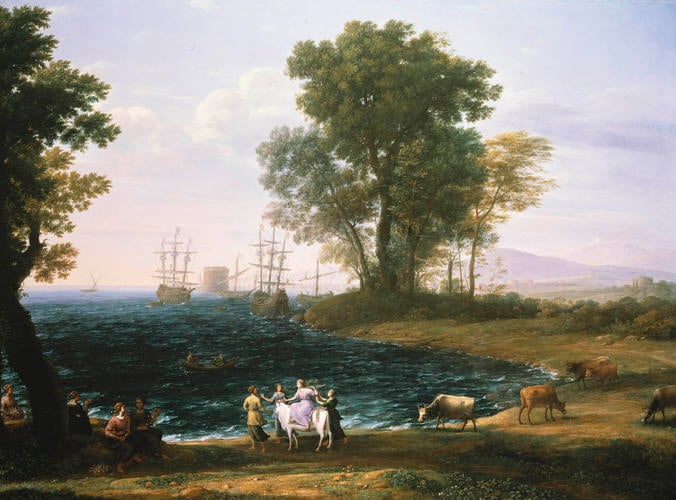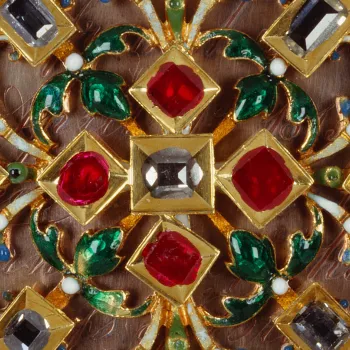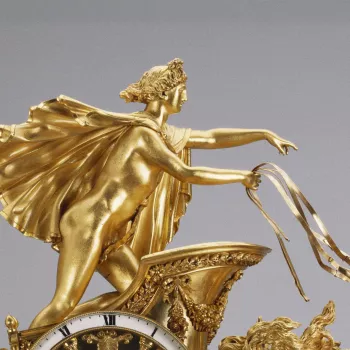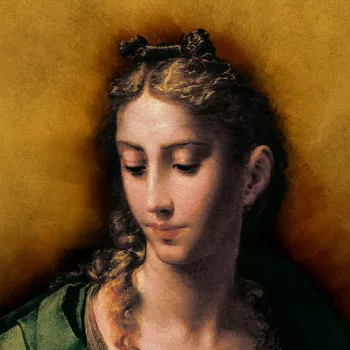Coast scene with the Rape of Europa Signed and dated 1667
Oil on canvas | 102.0 x 134.9 cm (support, canvas/panel/stretcher external) | RCIN 405357
-
The Rape of Europa is recounted in Ovid's Metamorphoses. Jupiter, who was enamoured with the mortal princess Europa, the daughter of Agenor, King of Tyre or Sidon in Phoenicia, changed himself into a white bull and mingled with a herd of cattle, while Europa and her attendants were gathering flowers near the seashore. Charmed by the bull's good nature and fine appearance, Europa hung garlands of flowers over its horns and climbed onto its back. She was abducted by Jupiter, who carried her out to sea, to the island of Crete, where he resumed his normal shape and raped her. While the Rape of Europa was a popular choice of subject for artists since antiquity, the sexual violence inherent, or alluded to, in some of the scenes depicted is something that can now be unsettling to modern viewers.
Claude came from Lorraine, but worked throught his career in Rome, where he was inspired by the ruined architecture of classical antiquity, the intense southern light and the beauty of the Roman countryside. He worked alongside his compatriot, Nicholas Poussin; together they forged a new, more intellectual type of landscape, which was a fitting setting for stories taken from classical mythology.
Five versions of this subject by Claude are known, the earliest was painted in 1634. Of these, the one in the Royal Collection is the last and the most sophisticated. The calm mood of the scene is established by the carefully placed trees, the fortification and ships on the horizon, and the pale golden light. The central group seem light-hearted and part of this Arcadian world. Yet the artist has depicted the natural world with great care: the breeze whipping up the water, the waves dashing against the ships, which are moving up and down on the sea, the rocky shore, the flowers on the horns of Jupiter, the grazing cattle and the magnificent trees framing the composition. Claude vividly contrasts the beauty of the setting with the latent violence of the subject and creates a real as well as poetic world.Provenance
Mme. de Bandeville's collection, Paris; sold 3 December 1787; Lord Gwydir's sale, Christie's, 9 May 1829 (81); where purchased by George IV for 2000 guineas; added to the Carlton House inventory dated 1819 (no 628); in the Picture Gallery at Buckingham Palace in 1841 (no 88)
-
Creator(s)
Acquirer(s)
-
Medium and techniques
Oil on canvas
Measurements
102.0 x 134.9 cm (support, canvas/panel/stretcher external)
126.9 x 160.1 x 12.5 cm (frame, external)
Category
Object type(s)











